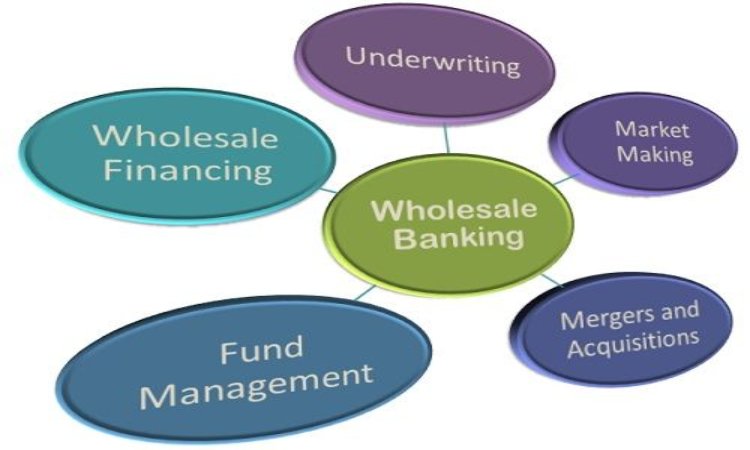Today’s world is highly competitive and data driven, and businesses are looking for that extra edge all the time. There isn’t a part of decision making where analytical leadership doesn’t influence what enterprise leaders do, from figuring out how your customer behaves, to investing in the right supply chain, to reading the direction of the wind.”/div”Ping: That is why business analytics has to be fed into strategy.
Business analytics has become a new buzzword in business these days. Startup or enterprise, the use of data as a strategy differentiator is what makes leaders out of laggards in the industry. That’s the reason professionals specialized in business analytics are in more demand now than ever – whether it includes those who already have CBAP certification or other similar credentials (or want to acquire one), or who are enrolled in such online training programs.
In this blog, we will learn how business analytics powers the latest strategic decisions and business models in a corporate world and the use of various tools and methods as well as how you can build successful careers in this thriving field.
What is Business Analytics?
Business analytics is the ability of an organization to collect, maintain, and orchestrate the results of the company using relevant and up-to-date data from both physical and digital sources and explore it into additional information (knowledge). It encompasses:
- Descriptive Analytics What happened?
- Diagnostic Analytics: How did it happen?
- Predictive Analytics: What can we expect?
- Prescriptive Analytics: What can we do?
These analytics types are not abstract concepts — they are currently used in marketing and product development, in finance and in HR management. Through turning data into action and insight, companies can create strategies which are active instead of reactive.
The Power of Business Analytics
9 Essential Reasons Why Biz-Intelligence Is Important To Strategy Success:
Informed Decision Making
Intuitive decisions are less common than they used to be. Thanks to business analytics, not only can leaders now rely on hard facts instead of conjecture, they gain access to hard figures that support and inform decisions. Whether in predicting financials or segmenting your customer base, data-driven insights result in better results.
Identifying Opportunities
Business analytics is used to discover hidden patterns, identify customer preferences, and find new ways to improve efficiency. These insights enable businesses to find new market opportunities or streamline their existing operations.
Minimizing Risks
Purpose-built analytics tools are able to model out situations and simulate different outcomes, giving organizations some sense in moving forward where the risks will be. Risk management is much less effective if it’s not informed by historical or real-time data.
Enhancing Customer Experience
From behavioral analytics to personalization — data enables companies to get to know their customers on a granular level. What this means is better products, more focused marketing, and less churn.
Performance Monitoring
Businesses are able to keep little Control over their KPI’s with actually reporting dashboards. This up-to-the-minute visibility ensures that strategic initiatives are on track and agile when pivots are necessary.
Elements of a Business Analytics Strategy
Incorporating analytics into your business strategy isn’t just a matter of installing a few tools. Its solution also demands disciplined methodology as follows:
Data Collection & Governance
Before they can answer any questions with data, though, that data needs to be collected from diverse sources — sales, CRM, web analytics, social media, etc. — and of high quality.
Analytics Tools
Popular tools include:
Microsoft Power BI
Tableau
SAS Business Analytics
Google Analytics
SQL, Python, and R for advanced/ML analytics
Skilled Talent
A solid data strategy requires the ability to decipher the data and translate insights into our strategy. Obtaining credentials such as CBAP certification or online advanced training courses might be a key when it comes to this skill.
Data-Driven Decision Making Culture
Companies need to cultivate a mentality where data is a driver of decision-making throughout the organization, from the C-suite to the front line.
Business Analytics in Various Industries
Business analytics does not limited to a sector. Here’s how it drives strategies across different industries:
Retail
Customer Segmentation and Behavior Analysis
Inventory optimization
Personalized marketing
Finance
Fraud detection
Risk assessment
Scoring and modeling of credit and loans
Healthcare
Patient outcome prediction
Operational efficiency
Resource allocation
Manufacturing
Supply chain optimization
Predictive maintenance
Quality control
Technology & SaaS
User churn prediction
Product roadmap planning
Feature usage analysis
In each, analytics are critical not simply to inform decisions, but to make them.
Careers in Business Analytics
As the demand for analytics professionals soars, so does the need for specific skills. Whether you work as a business analyst, data analyst, or strategy consultant, the need to keep upskilling in order to remain competitive is clear. Two proven pathways are:
CBAP Certification
The CBAP (Certified Business Analysis Professional) certification from the International Institute of Business Analysis (IIBA), is one of the most esteemed credentials for experienced analysts. It caters to professionals with 5 or more years of business analysis experience.
Benefits of CBAP:
Perks up your credibility and authority
Unlocks opportunities into senior type roles within strategy and product leadership
Confirms extensive knowledge of business analysis models
Internationally recognised by all sectors
This certificate shows not only that you get Business Analytics, but that you can use it on an enterprise level to make strategic decisions for a business.
Online Training Courses
For all-level professionals, online training courses offer flexible, hands-on ways to upskill. Topics covered by these courses can range from tools (such as Python, SQL, Tableau) to methodologies (Agile, Lean, Six Sigma) and strategic business concepts.
Advantages:
- Learn at your own pace
- Access from anywhere
- Frequently incorporate experiential learning and applied case studies
- More cost-effective than conventional ones
Business analytics courses are also offered by popular platforms such as Coursera, Simplilearn, and edX in collaboration with leading universities and industry experts.
Business Analytics Tools and Techniques in Strategy Formulation
To truly embed analytics into a strategy, they need to move away from simple reporting. Strategically using analytics involves:
SWOT Analysis: When Using Real Data: Enriching SWOTs with hard facts.
Scenario Modelling: Predictive models are used to simulate the range of possible strategic paths.
Value Chain Transformation: Leverage process analytics to optimize the value chain and reduce costs.
CLV Analysis: High-value customer segmentation for driving retention and loyalty strategies.
Today’s business strategy is not any more about static annual planning but rather — if done right, it’s a dynamic, continuously-planned, ongoing, live, actionable process, fueled by metrics and guided by peer/peer coaching that moves at the speed of the business.
Challenges in Integration of Business Analytics
But even among those with the tools and people in place, many companies have yet to figure out how to make analytics work effectively. Common hurdles include:
Siloed Data: Unintegrated systems create difficulty in obtaining a 360 degree view.
Shortage of Skilled Labor: Hiring or training repay on long run.
Low quality data: Inaccurate and inconsistent data will give you a false insight.
Lack of Flexibility: Culture change is required for adoption of analytics.
These barriers can be addressed by investing in good online training courses, in creating cross-functional teams and setting clear data governance rules.
Real Examples: How Driven Strategies Use Big Data And Analytics In Action
Imagine a logistics company burdened with delays, and escalating operating expenses. It has emerged that it incorporated the business analysis in the strategy and therefore:
Insight Descriptive Analytics uncovered that the delays were predominantly coming from one region.
Driver Shortage and Inefficiency Building the Case for a Diagnostic Analysis indicated Driver Shortages and Inefficiency.
Predictive Models supplied estimated hours when congestion would be highest.
Prescriptive Recommendations spanned route edits and predictive staffing.
In three months, the company reduced delivery time by 22%, and its satisfaction scores by 30%.
Those kinds of results — outside of Silicon Valley, that is — are not the exception, but the norm when analytics is woven into strategic planning.
Emerging trends in Business Analytics Strategy
As with technology, the debate around analytics will also grow and change over time. Some key trends include:
By using AI-Powered Analytics, I mean: devices that not only tell you WHAT is happening, but what you can do next.
NLP (Natural Language Processing): Enabling tech-novice users to perform analytics.
Embedded Analytics: Bringing intelligence to business with the embedding of insights in business applications.
Real-Time Analytics: Taking action on the fly with fresh data.
For professionals who want to stay in the game, they should always keep their skills updated-realize it by getting CBAP certification, or by availing the hands-on online training courses.
Final Thoughts
Business analytics is more than a support function—it’s a strategic enabler. In today’s business environment, agility, precision and adaptability ultimately lead to success and analytics ensures you have the information necessary to make bold, confident and informed decisions.
Companies that make analytics a part of their strategic DNA will remain ahead of the curve, and those who don’t will risk irrelevance. For professionals, this is the best time ever to become an expert in this area. Whether it’s taking our pre-eminent CBAP® certification or taking advantage of our online training, the way forward for becoming that strategic, analytics-driven leader is bright.


